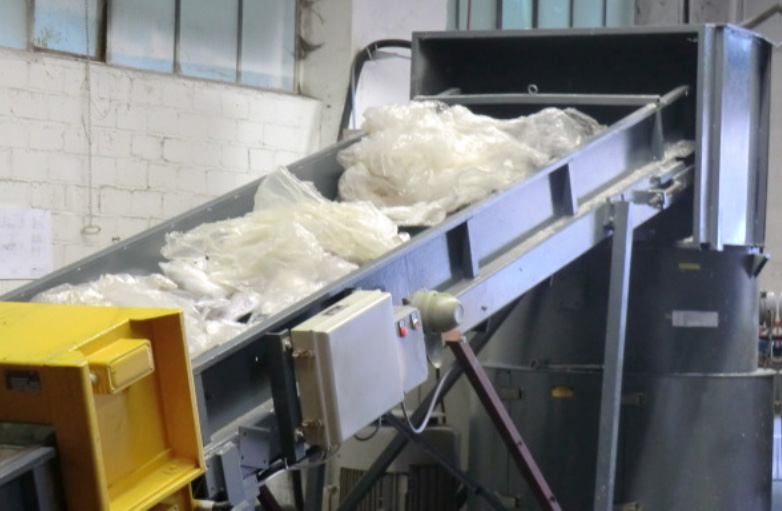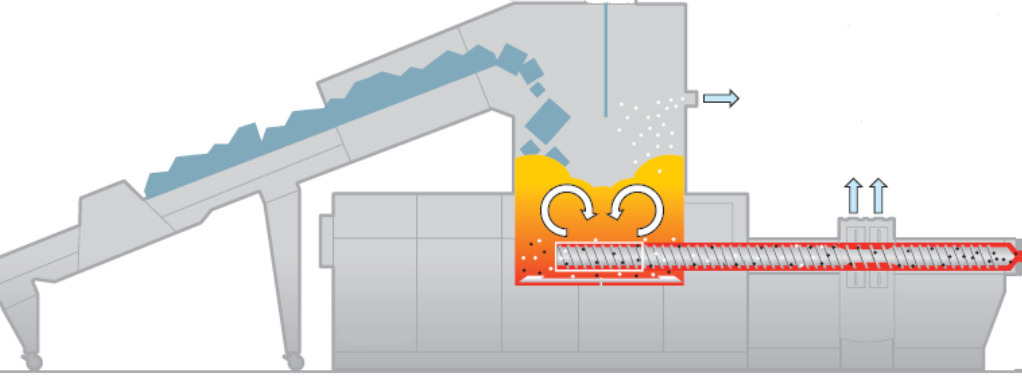The advanced plastics processing system (APPS) represents a new approach to plastics waste minimization in nuclear power plant waste treatment and in other areas where radioactive waste arises.
Some customers currently sort plastics waste in sorting boxes, place it into compactable drums and then compact or supercompact it. Because compacted plastic has a deformation memory, “spring back” results after compaction, making it difficult to achieve optimal waste reduction.
A Westinghouse APPS installation is based on proven techniques that are currently used in the plastics industry worldwide. Westinghouse innovates to enhance them for the nuclear application. Maximum waste reduction is achieved without changing the chemical composition of the plastics.
Our APPS consists of a shredder with a transport system, an extruder, a filling station and a drum docking/cooling station. The APPS can be connected directly to a (Westinghouse) sorting box where the waste is collected. An operator separates the plastics from the other waste and puts the plastics (polyethylene, polypropylene, textile-enforced tape, certain duroplasts [fractions], latex rubber [fractions], polyvinyl chloride [requires additional equipment]) into the docked APPS, while the remaining waste is treated as before.
The first step in the process takes place in the shredder, where the waste is prepared to enter the extruder. The waste material will be cut, mixed, heated, dried, densified and buffered. Then the prepared waste is moved into the extruder. Once in the extruder, the waste will be mixed again, plasticized, homogenized and filled into a waste drum. When the drum is filled up, it is left to cool down before further processing. The compactable drum is placed in a chamber with ventilation to ensure safe processing.
An APPS can process 30 to 80 kg/h of plastic, including plastic mixtures and even certain thermoplast/duroplast mixtures, and achieve a volume reduction factor of six (depending on the plastic material and bulk density of the feed material). Although designed to interface with sorting boxes, the APPS is also available as a stand-alone system for direct feeding and can also be integrated into existing waste treatment streams.
An APPS offers safe handling of plastics waste while achieving a high-volume reduction. Benefits include:

Plastics waste process example – waste feed

Illustration showing four main processing steps in the APPS